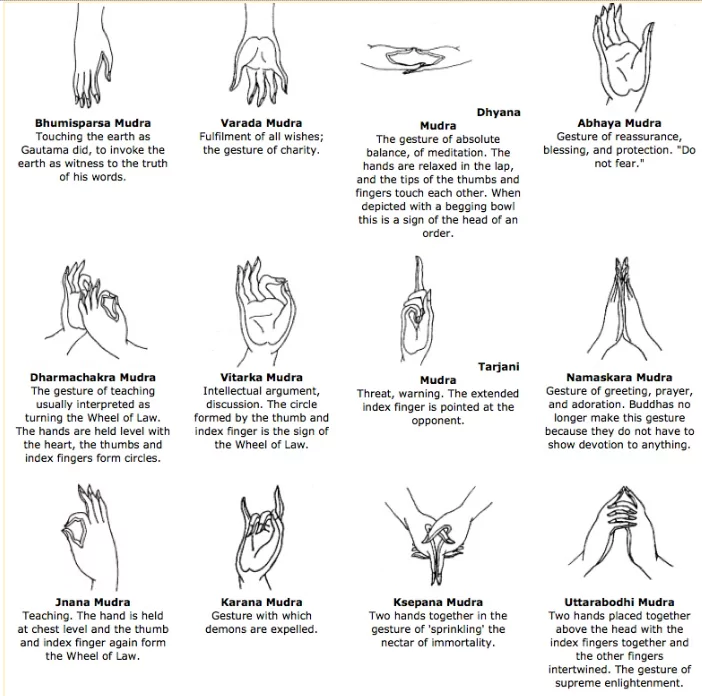Mudras, symbolic hand gestures and postures, hold significant importance in Buddhist practice and iconography. These gestures convey various aspects of Buddhist teachings, representing qualities such as enlightenment, compassion, and wisdom.
| Dhyana Mudra |
- This mudra symbolises meditation, concentration, and inner peace.
|
| Anjali Mudra |
- Represents respect, greeting, and gratitude.
|
| Vitarka Mudra |
- This mudra is also known as the “teaching mudra” or “gesture of discussion” and represents the transmission of knowledge and the communication of the Buddha’s teachings.
|
| Varada Mudra |
- Represents generosity, compassion, and the granting of wishes.
|
| Abhaya Mudra |
- Represents fearlessness, protection, and the dispelling of negativity.
|
| Bhumisparsha Mudra |
- Represents the moment of the Buddha’s enlightenment, and the gesture symbolises the earth witnessing his attainment of enlightenment.
|
| Uttarabodhi Mudra |
- This mudra represents the union of wisdom and compassion, the balance of masculine and feminine energies, and the attainment of enlightenment through the integration of all aspects of thyself.
|
| Dharma Chakra Mudra |
- Dharmachakra in Sanskrit means the wheel of Dharma. This mudra represents the setting into motion of the wheel of the teaching of Dharma.
|
| Karana Mudra |
- Represents depictions of the Buddha or bodhisattvas as a symbol of protection and dispelling of negativity. The index finger is said to represent the energy of wisdom and the ability to overcome obstacles.
|
| Jnana Mudra |
- Represents the unity of individual and universal consciousness and the connection between the practitioner and the teachings of the Buddha.
|
| Tarjani Mudra |
- Represents a symbol of warning or protection against evil forces.
|

Enroll now for UPSC Online Course
Conclusion
- The diverse range of mudras in Buddhism serves as a visual language, conveying profound spiritual meanings and guiding practitioners on the path to enlightenment. Through these symbolic gestures, Buddhists cultivate mindfulness, compassion, and inner transformation.
![]() April 27, 2024
April 27, 2024
![]() 3006
3006
![]() 0
0
